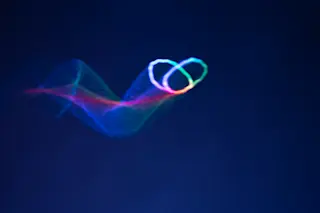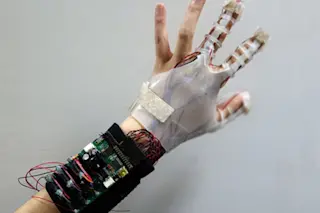Scientists have invented a lens that defeats the diffraction limit, a seemingly immutable physical law that restricts image quality. Conventional lenses can resolve only objects that are larger than the wavelength of light, but the new design can clearly see previously inaccessible, sub-wavelength details.
The problem with traditional lenses, says University of Toronto electrical engineer George Eleftheriades, is that they destroy evanescent waves—reflections from an illuminated object that contain minute details of its appearance. As evanescent waves pass through a conventional lens, they dwindle to invisibility; in the process, some of the most interesting parts of the image are lost. Four years ago, physicist John Pendry at Imperial College in London worked out a method that would, in theory, recover the evanescent waves, but nobody knew if it was practically feasible.
To find out, Eleftheriades and graduate student Anthony Grbic constructed a novel lens out of a thin lattice of metallic strips interlaced with inductors and capacitors, devices that store, respectively, magnetic and electric energy. The researchers combined these components in a way that captured evanescent waves from microwaves, which are similar to light waves but larger and hence easier to manipulate. “In the lenses we made, the evanescent waves were actually enhanced, so they contributed to better resolution,” Eleftheriades says. “We got six times better resolution than with a conventional lens, and we think we can do even better.” This work could lead to sharper medical imaging, smaller antennas, and better surveillance technology, he predicts.














